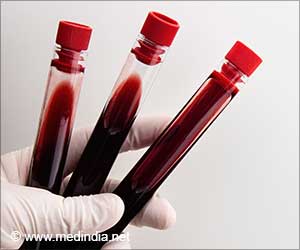Brown fat cells that were found to regulate babies body temperature also play an important role by flexing the muscles to burn energy and can help the adults in weight loss.

"We have figured out a new pathway that triggers brown fat tissue to consume calories from fat and sugars and radiate them away as heat," said Andreas Stahl, professor and chairman of the Department of Nutritional Sciences and Toxicology at Berkeley. "This understanding of how brown fat is activated could unlock new ways to combat obesity."
The research is published in the journal Cell Metabolism. The work was funded by the National Institutes of Health and the American Diabetes Association.
When cold, the human body shivers to produce heat in an attempt to maintain a body temperature of 98.6 degrees Fahrenheit. Newborn babies, who can't yet shiver, have a patch of brown fat between their shoulder blades, and its job is to take in nutrients to burn their energy to produce heat for regulating body temperature. Brown fat cells decrease in number as babies grow up, but adults still have a small number of brown fat cells that are not very active.
Here's how brown fat works: When the body senses cold, the brain releases norepinephrine, which is detected by a receptor in brown fat cells. A cascade of biochemical signals is then triggered, leading to the production of a protein called Uncoupling Factor-1 (UCP1), which travels into the mitochondria of brown fat cells.
A normal cell uses mitochondria like a battery to perform work. Mitochondria turn nutrients from the diet into energy that is mostly stored in a molecule called ATP. But in brown fat cells, UCP1 short-circuits that battery, causing it to heat up instead of producing ATP. With UCP1 activated in the mitochondria, brown fat cells soak up fat and sugars from the diet and burn them for heat in the mitochondria.
Advertisement
To find out, the scientists stimulated brown fat and measured how much the cell flexed by measuring the increase in tension in the cell. They found that the cells became roughly twice as stiff when stimulated. Then the scientists disabled the muscle-like myosin in brown fat cells and found that the cells became significantly softer, with their stiffness reduced by about a factor of two.
"This study offers a remarkable example of how mechanical and other physical forces can influence physiology and disease in powerful, unexpected ways," said Sanjay Kumar, Berkeley professor of bioengineering and a co-author of the study. "We hope that our work will aid in the design of therapeutic biomaterials and other technologies geared towards enhancing brown fat function."
The study found that UCP1's activity is directly tied to the increase in cell tension. The scientists then relieved the tension in activated brown fat cells and found that caused a 70 percent reduction in UCP1, so the cells generate less heat. The scientists then identified molecules in the cell that respond to increased tension to trigger the activation of UCP1. In experiments in mice, they disrupted these molecules and found that the brown fat cells lost their function and physically looked more like white fat cells, where the body stores excess energy.
"We found that cell stiffening really plays a big role in the function of brown adipocytes," Stahl said. The scientists used a drug to trigger increased tension in brown fat cells and found that the concept of activating tension can lead to burning calories, but much more work is needed to identify the right chemical compound that could do this effectively.
"Now that we better understand how brown fat cells work, we can think about ways to stimulate muscle-like myosin in brown fat to increase thermogenesis and burn calories," Stahl said. "Drugs to stimulate muscle-like myosin in existing brown fat would probably create more active brown fat cells in adults."
Source-Eurekalert















